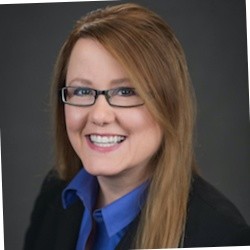SAIDO Learning: A timeline
The journey to bring the SAIDO Learning approach to treating Alzheimer's disease and dementia from Japan to the United States began in 2010, nine years after the technique had been developed overseas. This timeline details the process.
2001 – SAIDO Learning is developed by Dr. Ryuta Kawashima, a neuroscientist in Japan, in conjunction with the Kumon Institute of Education in Osaka, Japan, as a result of a joint research project at Dokai Eijukai Special Nursing Home in Okawa City, Fukuoka. In subsequent years, it is used with more than 18,000 older adults in 1,400 nursing facilities in Japan.
2004 – Two sister organizations in Japan, the Society for Learning Therapy, of which Kawashima is chairman, and the Kumon Learning Therapy Center, are established to ensure the precise dissemination of the technique.
June 2010 – Hiroyuki Murata of the Smart Aging International Research Center at Tohoku University in Sendai, Japan, visits Cleveland to determine whether SAIDO’s results could be replicated in the United States. Eliza Jennings Senior Care Network President and CEO Deborah Hiller is invited to hear him speak and decides she would like to provide the program to residents in Eliza Jennings communities in Northeast Ohio.
Fall 2010 – Hiller travels to Japan to see SAIDO first-hand. After a subsequent trip to Cleveland by Kumon officials, Eliza Jennings and Kumon negotiate a formal agreement to conduct a clinical trial of SAIDO at Eliza Jennings. Japanese materials are adapted for American users.
May 2011 – The clinical trial of SAIDO begins at the Eliza Jennings Home, with a control group at the network's Renaissance Retirement Campus. Twenty-three residents, called learners in the SAIDO program, commit to the 30-minute, five-day-a-week sessions; 24 residents serve as controls. Kawashima is the principal investigator. During the trial, Kumon representatives travel to Cleveland to train Eliza Jennings employees serving as "supporters" (exercise leaders) in the SAIDO program.
October 2011 – A short video clip demonstrating SAIDO is shown at the LeadingAge annual meeting of not-for-profit aging services providers.
November 2011 – The study of SAIDO concludes at the Eliza Jennings Home and the Renaissance Retirement Campus. Every learner participating in SAIDO, according to the entities, improved in performance on one or both assessments of cognitive impairment given, and qualitatively, they showed increased independence in their performance of activities of daily living, increased social interaction and engagement, and decreased behaviors related to dementia. Eliza Jennings and Kumon begin year-long negotiations to enable Eliza Jennings to expand SAIDO to all of its communities.
December 2012 – Eliza Jennings begins offering SAIDO at some of its other communities. Learners pay $5 per day or $120 per month, and Eliza Jennings seeks scholarship support for residents who can’t afford some or all of the cost.
April 2013 – A Japanese documentary called “Do You Know What My Name Is?” featuring the SAIDO technique in action at Eliza Jennings, is shown at the Cleveland International Film Festival and the American Documentary Film Festival in Palm Springs, Calif. At the latter event, the documentary wins the Audience Favorite–International Film Award. The latter festival also would later screen the film at the City of Rancho Mirage Public Library, in September.
June 2013 – More than 100 Eliza Jennings Senior Care Network residents are learners in the SAIDO program.
July 2013 – The Eliza Jennings Senior Care Network is named Long-Term Living’s 2013 OPTIMA Award winner for its entry detailing the trial and subsequent implementation of the program in its communities.
August 2013 – Eliza Jennings and Kumon finalize an agreement that enables the nonprofit Eliza Jennings to act on behalf of Kumon and charge other aging-services providers for training and credentialing in SAIDO Learning. Long-Term Living editors visit the Eliza Jennings Home and the Renaissance Retirement Campus to learn more about the OPTIMA Award winner.
September 2013 – The print and digital editions of Long-Term Living and the media brand's website feature coverage of the OPTIMA Award-winning SAIDO efforts at the Eliza Jennings Senior Care Network.
Related SAIDO and OPTIMA Award winner coverage:
The gift of the present
How SAIDO Learning works
The SAIDO clinical trial
One-on-one with… Chelley Antonczak
SAIDO Learning in action: A typical session [VIDEO]
Blog: The elusive high five
SAIDO Learning: Seeing is believing [PODCAST]
SAIDO Learning: ‘It’s remarkable’ [PODCAST]

Lois A. Bowers was senior editor of I Advance Senior Care / Long-Term Living from 2013-2015.
Related Articles
Topics: Alzheimer's/Dementia , Articles , Clinical , Executive Leadership











